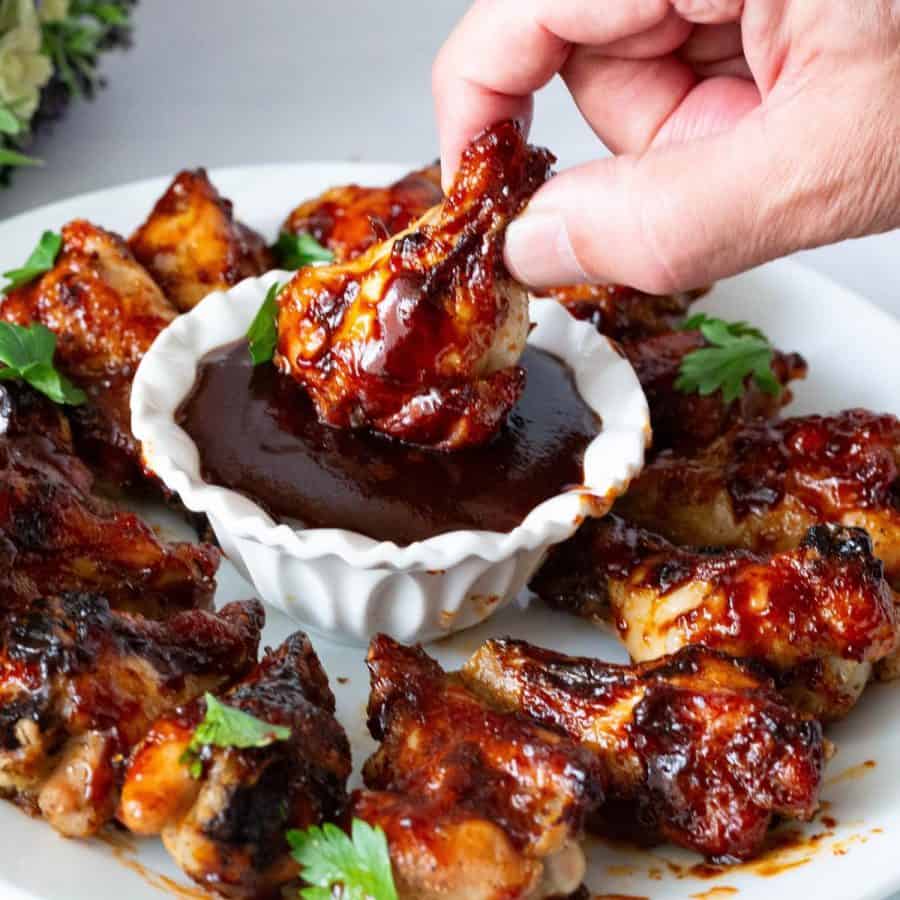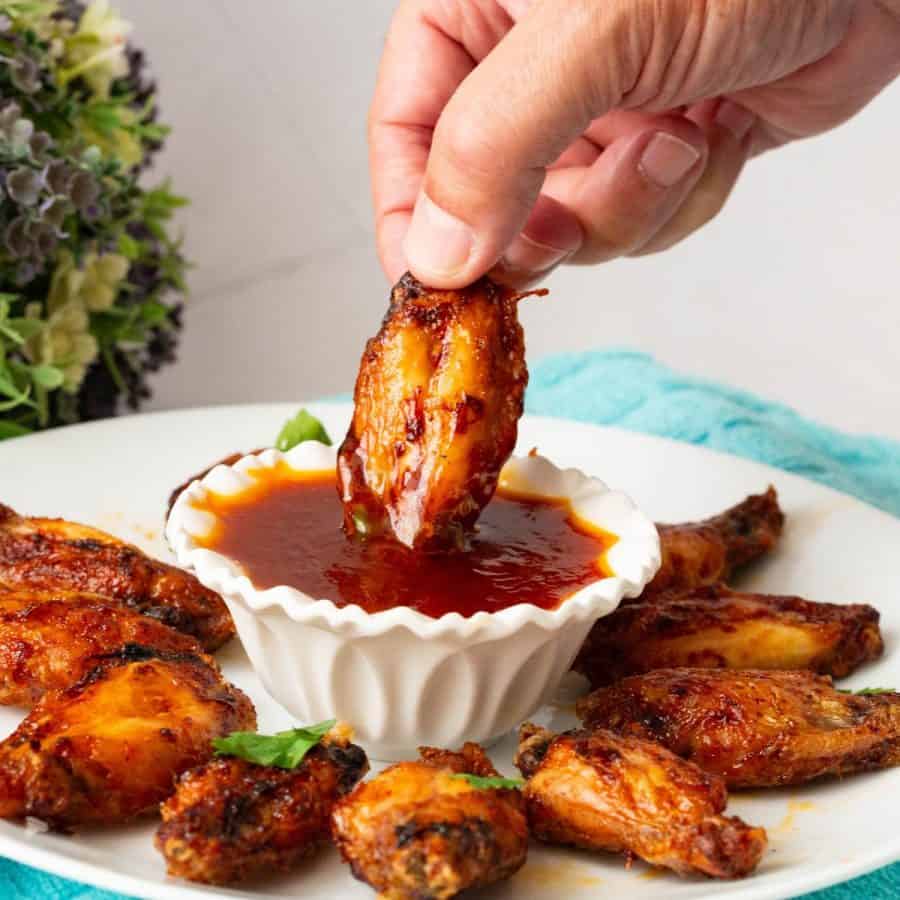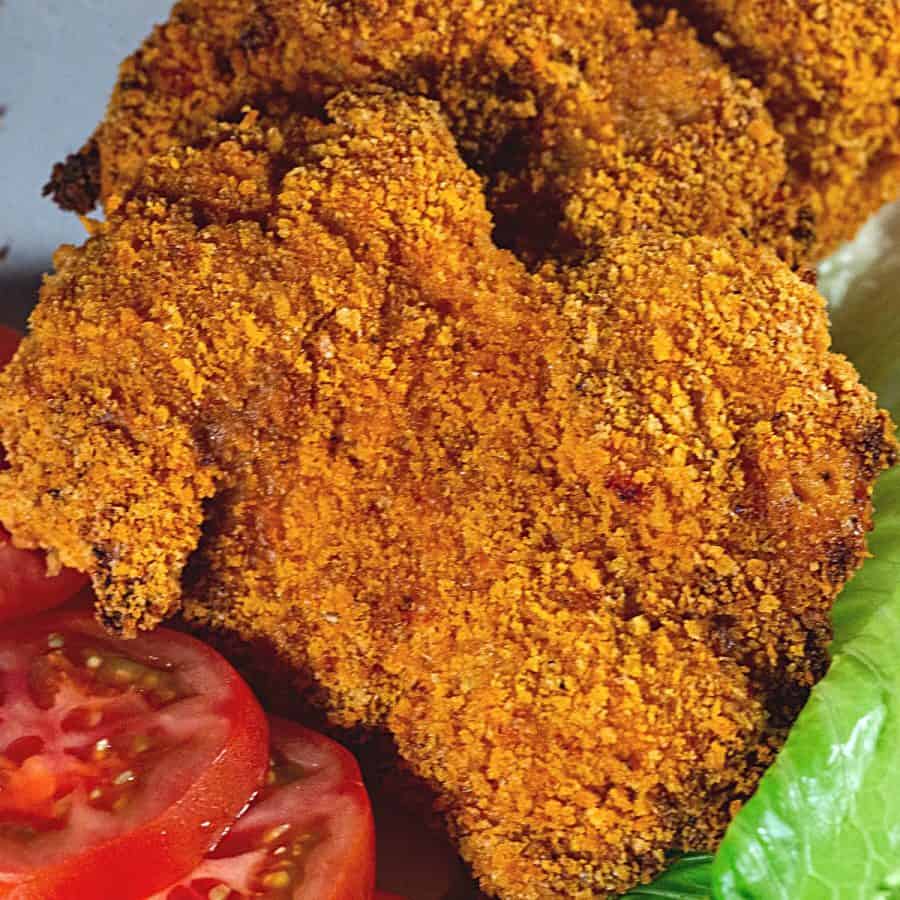Thai curry is a quintessential part of Thai cuisine, known for its rich, aromatic, and complex flavors. It combines a harmonious blend of spices, herbs, and coconut milk to create a creamy and flavorful dish that is both comforting and invigorating. Green curry stands out for its vibrant color and distinct taste among the various types of Thai curry. Green curry paste is the heart of this dish. It is made from fresh green chilies, garlic, shallots, lemongrass, galangal, lime zest, and aromatic spices. It delivers a punchy, herbaceous flavor that sets it apart from other curries. The paste’s bright and fragrant profile is balanced by the creamy sweetness of coconut milk, creating a deliciously complex and satisfying sauce. Using chicken in Thai green curry makes for a quick and easy meal. Chicken thighs, in particular, are tender and flavorful, absorbing the rich curry sauce beautifully. Combining green curry paste and chicken results in a dish that is both simple to prepare and deeply satisfying. Whether you’re a busy home cook or new to Thai cuisine, Thai Green Curry Chicken offers a delicious and accessible way to enjoy the authentic flavors of Thailand. It’s perfect for weeknight dinners or a special meal with friends and family.
Why is this the best recipe?
Balanced Flavor Profile: The combination of green curry paste, coconut milk, and fish sauce creates a perfect harmony of spicy, creamy, and savory flavors. It’s also enhanced by fresh lime juice and aromatic Thai basil. Nutrient-Rich Vegetables: The use of red and yellow peppers, carrots, mushrooms, and parsnips adds vibrant colors to the dish and also provides a variety of vitamins, minerals, and antioxidants. Thus making the meal wholesome and nutritious. Versatile and Customizable: This recipe is highly adaptable, allowing you to swap the chicken for other proteins like shrimp, tofu, or beef. You can also vary the vegetables based on personal preference or seasonal availability. Simple and Quick Preparation: With straightforward steps and readily available ingredients, this recipe is easy to follow and can be prepared in under an hour. Thus making it perfect for a quick weeknight dinner. Authentic Thai Experience: The recipe captures the essence of traditional Thai cuisine. It offers an authentic taste experience that can be enjoyed at home without the need for extensive cooking skills or hard-to-find ingredients. Visually Appealing: The vibrant colors from the vegetables and the rich, creamy curry sauce make this dish visually appealing. Thus enhancing the overall dining experience and making it an attractive option for serving guests or enjoying a special meal at home.
Ingredients and substitutes
Green Curry Paste: Provides the primary flavor base with a mix of herbs and spices typical of Thai cuisine. You can also use red curry paste (though the flavor profile will change slightly). Fish Sauce: Adds umami and a salty depth to the curry. You can also use soy sauce or tamari (for a vegetarian/vegan option). Sugar: Balances the spiciness and saltiness of the curry paste and fish sauce. Honey, maple syrup, or coconut sugar are great substitutes. Vegetable Oil: Used to sauté the curry paste to release its flavors. Canola, sunflower, or any neutral cooking oil also work well in this curry. Chicken Thighs: Provides a tender and flavorful protein base for the curry. Chicken breasts, shrimp, tofu, and beef are all great alternatives. Coconut Milk: Adds creaminess and a rich texture to the curry. You can also use coconut cream for a thicker consistency or almond milk (though it will be less creamy). Chicken Broth: Thins the curry and adds depth of flavor. You can also use vegetable broth or water. Red and Yellow Bell Peppers: Add sweetness, color, and crunch to the curry. However, you can use any color of bell peppers or other sweet peppers. Carrots: Provides sweetness and a slight crunch. You can also use sweet potatoes or butternut squash. Button Mushrooms: Add an earthy flavor and meaty texture. You can also use cremini mushrooms, shiitake mushrooms, or any other variety. Parsnip: Adds a slightly sweet and nutty flavor with a firm texture. You can also use turnips, rutabagas, or potatoes. Thai Basil Leaves: Add a unique anise-like flavor and fresh aroma. Regular basil, mint, or cilantro (though the flavor will be different) work too. Lime Juice: Adds acidity to brighten and balance the flavors. You can also use lemon juice or rice vinegar. Cilantro Leaves (for garnish): Adds freshness and a burst of color. You can also use parsley or additional Thai basil. Sliced Red Chilies (optional, for garnish): Adds heat and visual appeal. You can also use sliced green chilies, crushed red pepper flakes, or a dash of hot sauce.
Step-by-step: Thai curry chicken
Prepare the Curry Base: Heat the vegetable oil in a large skillet or wok over medium heat. Sauté the onions and garlic for 30 seconds. Next, add the green curry paste and sauté for 2-3 minutes until fragrant. Stir in the fish sauce and sugar, mixing well. Cook the Chicken: Add the chicken pieces to the skillet, stirring to coat them with the curry paste. Cook until the chicken is no longer pink, for about 5-7 minutes. Add Coconut Milk and Broth: Pour in the coconut milk and chicken broth and stir to combine. Then, add the lemon grass, lemon juice, and lime leaves. Bring the mixture to a gentle simmer. Cook the Vegetables: Add the vegetables and continue to cook for another 5-7 minutes or until the vegetables are tender but still crisp. Final Touches: Season with salt and pepper to taste. Then, let the curry simmer for a few more minutes to allow the flavors to meld together. Serve: Transfer the curry to a serving dish. Garnish with fresh cilantro leaves, lime wedges, and sliced red and green chilies. Serve hot with steamed jasmine rice.
Tips for Success
Use Fresh Ingredients: Fresh herbs and vegetables will significantly enhance your curry’s flavor and overall quality. Look for vibrant, unblemished produce. Adjust Spice Level: Green curry paste can vary in heat. So, start with a smaller amount and adjust to your preferred spice level. If it becomes too spicy, add more coconut milk to mellow it out. Sauté the Curry Paste: Sautéing the curry paste in oil before adding other ingredients helps release its full flavor. Cook it until it becomes fragrant, about 2-3 minutes. Properly Cut Vegetables: Ensure your vegetables are cut into uniform sizes to promote even cooking. Denser vegetables like carrots and parsnips should be sliced thinner than bell peppers to cook evenly. Simmer, Don’t Boil: Once you add the coconut milk and broth, keep the mixture at a gentle simmer rather than a rolling boil. Boiling can cause the coconut milk to separate. Don’t Overcook the Chicken: Chicken thighs are more forgiving than breasts. However, avoid overcooking them to keep them tender and juicy. Cut them into uniform, bite-sized pieces for even cooking. Add Vegetables in Stages: Add denser vegetables like carrots and parsnips first, allowing them to cook longer. Then, add bell peppers and mushrooms later to retain their texture and color. Fresh Thai Basil: Add Thai basil at the end of cooking to preserve its aromatic qualities. If you add it too early, it may lose its flavor. Balance Flavors: Taste the curry before serving and adjust the seasoning as needed. You might need more fish sauce for saltiness, lime juice for acidity, or sugar for sweetness. Resting Time: Let the curry rest for a few minutes after cooking to allow the flavors to meld together. This can make a significant difference in taste. Serve with Jasmine Rice: Serve your Thai Green Curry Chicken with steamed jasmine rice, which complements the rich and flavorful curry. Garnish Right Before Serving: Add fresh cilantro, lime wedges, and sliced chilies just before serving to maintain their vibrant appearance and fresh flavors. Use High-Quality Coconut Milk: Opt for full-fat coconut milk for a richer and creamier curry. Shake the can well before opening it to mix the cream and liquid.
Restaurant-Quality Thai Chicken Skewers at Your FingertipsThai Shrimp Soup: Spice Up Your Life with Asian FlavorsIndulge in Flavor: Chicken Satay with Peanut Sauce RecipeSlow Cooker Magic: Flavorful Indian Chicken Curry RecipeSpice Up Your Cooking: How to Make Chicken Curry
Frequently asked questions
Creative variations
Seafood Green Curry: Swap chicken for a mix of shrimp, scallops, and squid. Add the seafood towards the end of cooking as it cooks quickly. In addition, include a splash of fish sauce and lime juice for added depth. Vegetarian Green Curry: Replace chicken with tofu, tempeh, or a mix of hearty vegetables like sweet potatoes, zucchini, and baby corn. Press tofu to remove excess moisture before cooking. Add vegetables in stages based on their cooking times. Fruit-Infused Green Curry: Add chunks of pineapple or mango for a sweet and tangy twist. Stir in the fruit pieces towards the end of cooking to maintain their texture and flavor. Green Curry with Noodles: Substitute rice with rice noodles or soba noodles. Cook the noodles separately and add them to the curry just before serving. Garnish with fresh herbs and lime wedges. Spicy Green Curry: Increase the amount of green curry paste and add fresh green chilies. Adjust the heat level by adding or reducing the number of chilies. Balance with extra coconut milk if needed. Green Curry Soup: Add more broth to create a soup-like consistency. Include additional vegetables like spinach, bok choy, or bean sprouts. Serve in bowls with crusty bread or rice on the side. Coconut-Free Green Curry: Replace coconut milk with a blend of cashew cream (soaked cashews blended with water) and a bit of almond milk. Adjust the thickness by adding more or less cashew cream. Add a touch of coconut extract for flavor if desired. Herb-Enhanced Green Curry: Incorporate fresh herbs like mint, cilantro, and kaffir lime leaves for an aromatic boost. Add finely chopped herbs towards the end of cooking. Use kaffir lime leaves during the simmering process for a citrusy aroma. Green Curry with Quinoa: Substitute rice with quinoa for a protein-packed alternative. Cook quinoa separately and mix it with the curry before serving. Garnish with chopped nuts and herbs for added texture.
Creative ways to serve Thai curry chicken
Thai Green Curry Chicken Bowls: Serve the curry over a bed of jasmine rice, quinoa, or brown rice in a bowl. Garnish with fresh herbs, lime wedges, and sliced red chilies. Add a side of pickled vegetables for extra crunch and flavor. Thai Green Curry Tacos: Use small tortillas or lettuce leaves as wraps. Fill them with Thai Green Curry Chicken, shredded cabbage, carrots, and a sprinkle of cilantro. Serve with a wedge of lime and a drizzle of sriracha mayo. Green Curry Pot Pie: Fill a pie crust or individual ramekins with the curry mixture. Then, top with a layer of puff pastry and bake until golden brown. Serve hot with a fresh green salad on the side. Green Curry Chicken Sandwiches: Use toasted baguette slices or soft rolls. Spread a layer of mayonnaise mixed with a little green curry paste. Then, add the curry chicken and top with fresh cucumber slices, pickled carrots, and cilantro. Thai Green Curry Fried Rice: Use leftover curry to make flavorful fried rice. Sauté the curry with cooked rice, adding vegetables like peas, carrots, and green onions. Top with a fried egg and fresh herbs. Thai Green Curry Soup: Thin the curry with additional broth to create a hearty soup. Add noodles or rice and top with fresh herbs, bean sprouts, and a squeeze of lime juice. Thai Green Curry Lettuce Wraps: Use large lettuce leaves (like romaine or butter lettuce) as wraps. Fill with the curry chicken, julienned vegetables, and herbs. Serve with the curry as a dipping sauce. Thai Green Curry Skewers: Thread pieces of chicken and vegetables onto skewers. Grill until slightly charred and serve with a side of green curry dipping sauce and jasmine rice. Thai Green Curry Salad: Use the curry as a warm topping for a fresh salad of mixed greens, cucumber, cherry tomatoes, and red onions. Drizzle with a light lime vinaigrette.
Did you LIKE this recipe? Save it for later. You can find my recipes on Pinterest. Follow me on Facebook, Twitter, and Instagram.Subscribe, and I’ll send you new recipes right to your inbox. Thank you for sharing - Save for later




















